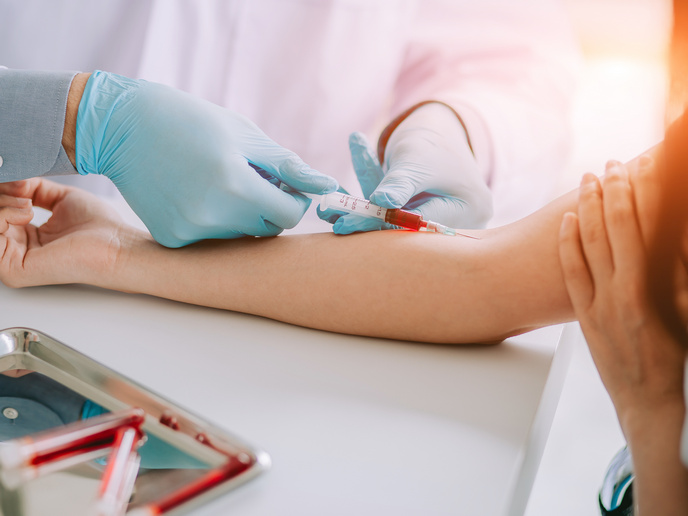Antibody findings could deliver therapeutic innovations
Antibodies(opens in new window) are critical components of the immune system that circulate in the bloodstream. Their job is to recognise foreign substances such as bacteria and viruses, and bind to them. This neutralises the pathogen’s ability to bind to host cell receptors. “There is however an enigmatic class of antibodies that don’t bind to pathogens,” explains CoBABATI project coordinator Jordan Dimitrov from Inserm(opens in new window) in France. “Instead, they bind to what are called low molecular weight compounds.”
Binding to low molecular weight molecules
Many of these compounds are cofactors(opens in new window) – compounds essential to cell function. Dimitrov was interested in better understanding why a certain subset of antibodies binds to these molecules instead of pathogens. In particular, he wanted to learn more about the impact haem(opens in new window), an iron-containing cofactor that is synthesised in the bone marrow and liver, has on antibodies. This compound is a precursor to haemoglobin(opens in new window), a critical component of red blood cells. Haemoglobin is responsible for the transfer of oxygen to the body, and gives blood its distinctive red colour. “Antibodies not only bind to haem, but this binding also changes their function,” explains Dimitrov. “I wanted to know the consequences of these interactions, why we need these antibodies in the first place, and whether these antibodies could be used in next-generation therapeutics.”
Assessing impact on pathogen defence
The starting point of the CoBABATI project, funded by the European Research Council(opens in new window), was to figure out the prevalence of antibodies in the body capable of binding to haem. The team found that between 10 % and 20 % of isolated human antibodies were able to do so. “We next wanted to understand how this interaction works at the molecular level,” says Dimitrov. “We were able to model the binding site, and identify where the antibodies bind to haem and what happens to the molecule as a result of this process.” A critical question was what effect this binding has on pathogen defence. One intriguing finding from a virus study was that some antibodies were unable to bind to the pathogen without first binding to haem. This suggests that they acquire the capacity to bind to the virus, only when haem is present. On the other hand, the study also revealed that after binding to haem, some antibodies started to bind to host proteins, triggering autoreactivity, where the immune system attacks the body. “We don’t yet know the final balance between these beneficial and detrimental effects,” says Dimitrov.
Evolutionary factor behind ‘enigmatic antibodies’
A final question posed by the project was why we have evolved these antibodies that target haem instead of pathogens. Dimitrov believes it may be because outside the red blood cell, haem can harm the body – it is a pro-oxidant and causes inflammation. It could therefore be that certain antibodies protect the body from the rapid uncontrolled release of cofactors such as haem, which could be detrimental if they were to interact with other cells. This understanding could open the door to possible enhanced therapeutics that target haemolytic diseases that damage blood cells, such as malaria and sickle cell, by more effectively removing toxins from the blood stream and protecting against inflammation. In addition, some cancer patients also have haemolytic complications. Understanding the interaction between therapeutic antibodies used for therapy of cancer and haem could help to ensure that future therapeutics have better efficacy.







